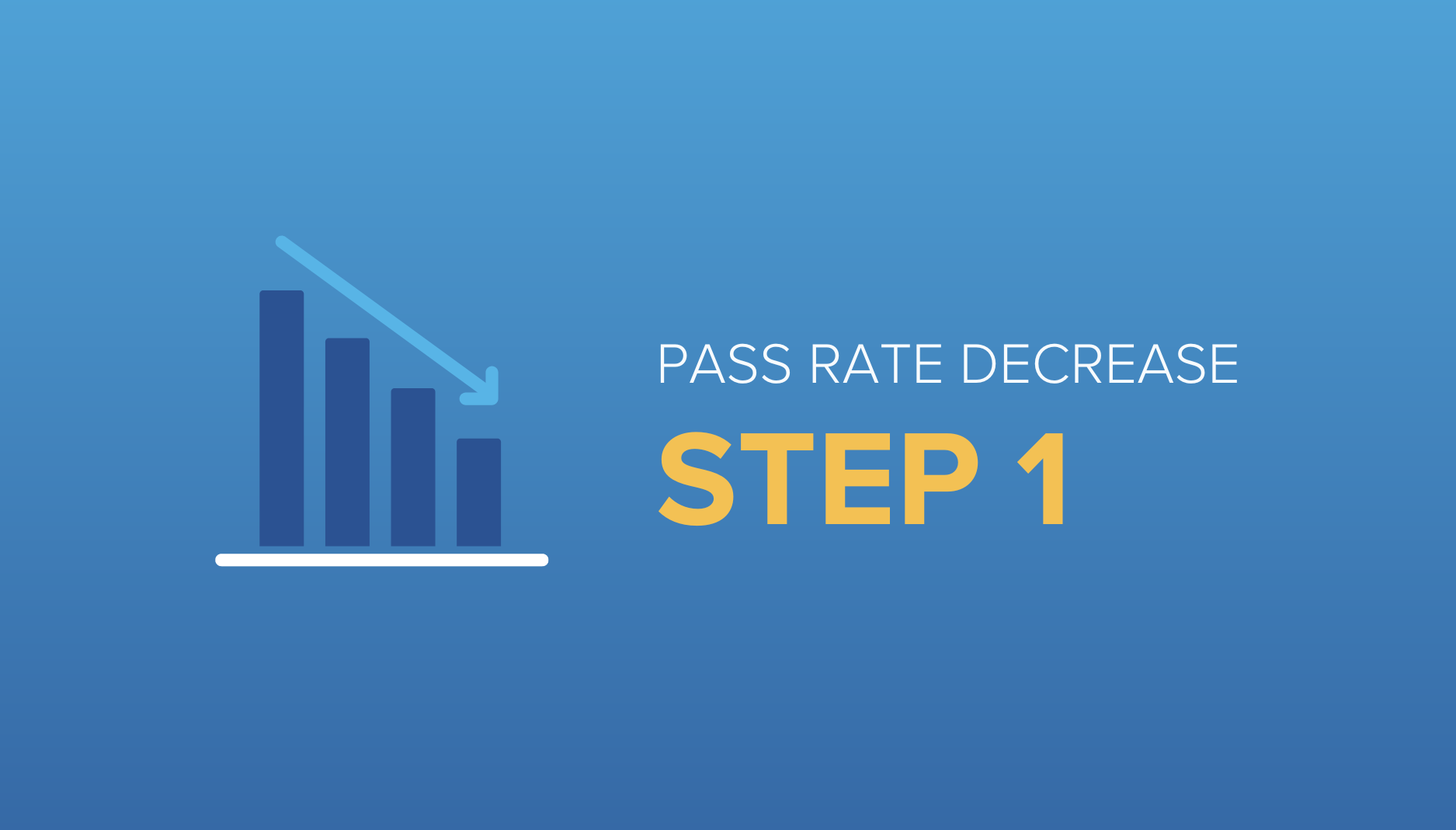Another year has passed, and with it another AMBOSS Step 1 Self-Assessment Week! More than 20,000 students (and some tutors, like me!) sat down to complete 160 practice questions provided by AMBOSS during the week-long eligibility time frame from February 20 through 28.
(Did you miss out? Keep yourself in the loop for future free AMBOSS practice assessment opportunities!)
Many of you who took the AMBOSS Step 1 Self-Assessment test with me may be wondering, “Now what?”
The answer lies in two more questions that pertain to any USMLE practice assessment:
1. Is this self-assessment representative?
and
2. Is it predictive?
AMBOSS Self-Assessment Content & Utility
The AMBOSS Step 1 practice assessment comprises 160 questions with content distribution that closely mirrors that of the USMLE Step 1 exam (e.g. Cardiology represented ~10% of the AMBOSS exam, compared to an anticipated distribution of 5-9% per the USMLE Content Outline). This includes recent changes to the USMLE to expand Social Sciences & Communications questions.
As a representative slice of what type of questions you’re likely to find on the USMLE Step 1 Exam, AMBOSS hits the mark.
Most questions provide detailed clinical vignettes or comprehensive explanations of physiological models and experiments, but there are the occasional two-sentence “know-it-or-don’t” questions, which is also aligned with what might be expected on the actual exam.
The overall texture of the practice assessment closely matches that of a UWorld Self-Assessment, but it definitely feels better targeted and more reading-intensive than a typical NBME Comprehensive Basic Science Self-Assessment (CBSSA).
Roughly 20% of questions on the AMBOSS form contained either a comprehensive set of labs, a graphical interface, or a histological/anatomical image in the question stem, which is also similar to other available practice assessments. In this regard, as well, the AMBOSS practice exam is a reasonably close match to Step 1 in the design of its questions.
Where AMBOSS really stands out, however, is in the content descriptions and teaching utilities it offers.
Each AMBOSS Self-Assessment question contains:
- Interactive best-use highlighting of important “Key Info” in the vignette
- The key educational objectives, labelled as “Attending Tip”
- Thorough description of each incorrect answer choice with images and diagrams of related material
- Hyperlinks to relevant articles on the AMBOSS site that provide more comprehensive detail regarding any disorder or diagnosis mentioned in the body of the question or explanation
In this regard, AMBOSS rivals—and perhaps even outperforms—the UWorld “gold standard” of question explanations. As a result, the AMBOSS practice exam is a fantastic learning tool!
Self-Assessment Difficulty & Scoring
The real question you’re all asking: what does the AMBOSS Self-Assessment three-digit score mean?!
The majority of questions were correctly answered by ~45-60% of the overall cohort. This is graphically represented with AMBOSS’ patented 1-5 Hammer Scale:
~90% of students answered correctly:
~30% of students answered correctly:
Wherein most questions are ‘2 Hammer’ (~60% correct respondents) to ‘4 Hammer’ (~45% correct respondents).
Overall, this is a hard test! The self-assessment scores follow a normal distribution:
Significantly more than 50% of students are falling below the national average on the USMLE Step 1 exam. A raw score near 58% yields a passing-range score. E.g.:
For reference, this is similar to the score profile in a UWorld Self-Assessment:
This is a bit more forgiving than an NBME CBSSA, in which a higher raw score (~68%) yields a similar three-digit calculation:
Based on these benchmarks, the AMBOSS practice assessment provides an optimistic but reasonable outlook based on raw score, and likely has a similar accuracy to the UWorld Self-Assessments. Nevertheless, the questions are individually very tough! If you walked away from this one feeling a little beat up, you are not alone.
With that in mind, it is very likely that the majority of test takers would reasonably expect to match their AMBOSS Step 1 Self-Assessment score on exam day if they plan to take their exams soon.
Expert Tutor’s Takeaways
Overall, the AMBOSS Step 1 Self-Assessment is an excellent practice test and is in every way competitive with the best forms available online. It provides a reliable approximation of a real USMLE Step 1 Exam form in style and substance, and it yields a meaningful prediction of potential performance on the real exam.
Personally, I look forward to recommending the AMBOSS Self-Assessment as one of the core practice exams I suggest to students I work with, alongside the UWorld Self-Assessments and NBME Comprehensive Basic Science Self-Assessments.
To those of you who have not yet utilized the AMBOSS form: I would encourage you to incorporate it into your own study plans!
Also, if you’re preparing for Step 2 CK, AMBOSS plans to do their first Step 2 CK Self-Assessment Week in May, so keep an eye out here for more details!
For additional tips on how to incorporate AMBOSS into your USMLE Step 1 preparation, see our AMBOSS QBank and Knowledge Library review.




